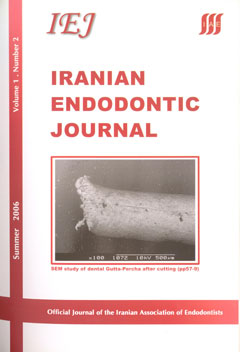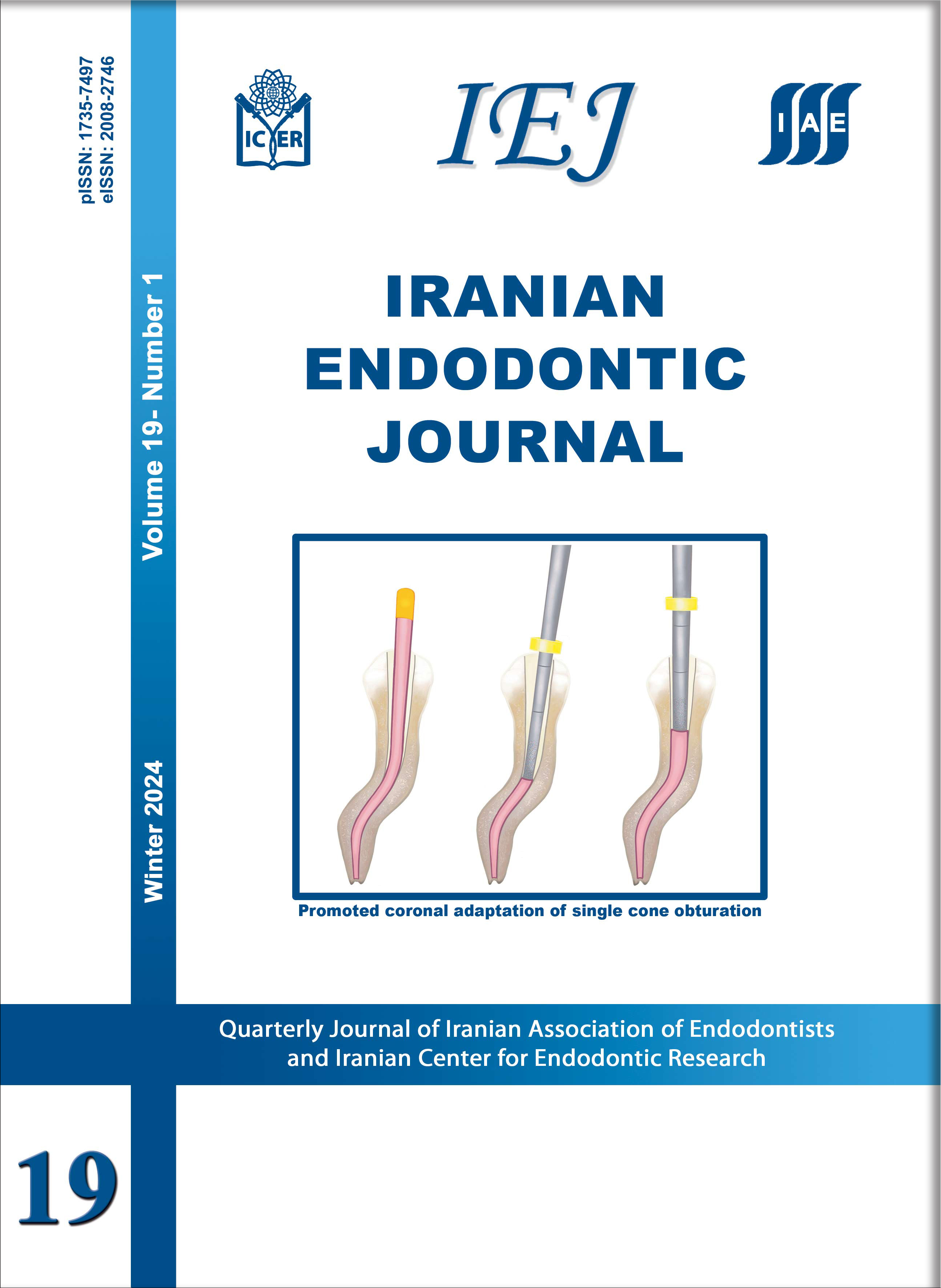Fracture Strength of Endodontically Treated Teeth Restored with Casting Post and Core and Glass-Fiber with Composite Core
Iranian Endodontic Journal,
Vol. 1 No. 2 (2006),
1 July 2006
,
Page 65-68
https://doi.org/10.22037/iej.v1i2.416
Abstract
INTRODUCTION: Prefabricated metal and ceramic posts can be used with different kinds of core materials as an alternative to the conventional casting post and cores. It is unclear how these post and core systems can withstand different kind of forces in the mouth. The purpose of this study was to compare the fracture strength of endodontically treated, crowned maxillary incisors restored with casting post and cores and glass- fiber post with composite core and to evaluate their mode of fractures. MATERIALS AND METHODS: Thirty caries free, human maxillary central incisors with incisoapical length of 23 ± 1 mm were divided into two groups. After root canal treatment procedures and decronation of teeth 2mm above cementoenamel junction, Grope 1 was restored with glass- fiber posts and composite cores and group 2 received casting post and cores. Teeth were prepared with a circumferential shoulder including a 1-2 mm ferrule and 0.5 mm bevel; all posts were cemented with an adhesive resin and teeth were restored with complete coverage crowns. Loads were applied at an angle of 135 degrees using a universal testing machine. Compression force was applied until the specimens fractured. RESULTS: The median fracture strengths of groups 1 and 2 were 459 and 686 respectively (p<0.05). In group I, all fractures occurred in incisal third of roots. In groups II, 40% of fractures were in apical third and middle of roots. CONCLUSION: Within the limitation of this study, the results suggested that glass fiber with composite cores can be used as an alternative to cast posts and cores in anterior teeth when creating 2mm ferrule effect was possible in normal occlusion. Clinical trial is required to verify these in vitro results.
- Casting Post and Core
- Fiber Post
- Fracture Strength
How to Cite
- Abstract Viewed: 301 times
- PDF Downloaded: 192 times




